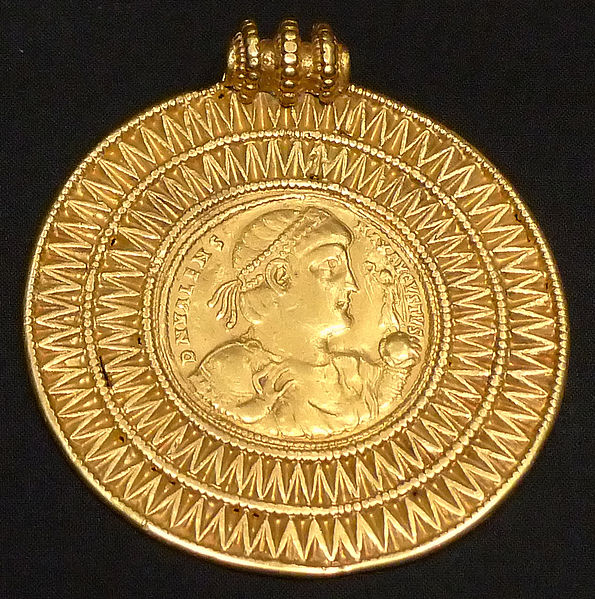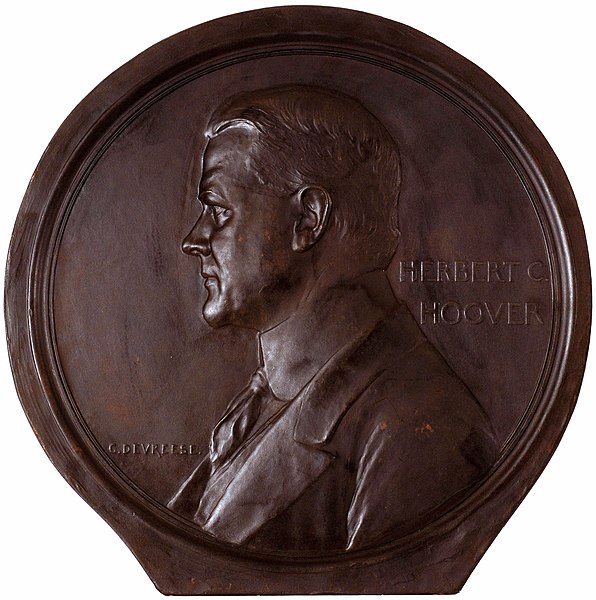The Liudhard medalet is a gold Anglo-Saxon coin or small medal found some time before 1844 near St Martin's Church in Canterbury, England. It was part of the Canterbury-St Martin's hoard of six items. The coin, along with other items found with it, now resides in the World Museum Liverpool. Although some scholarly debate exists on whether or not all the items in the hoard were from the same grave, most historians who have studied the object conclude that they were buried together as a necklace in a 6th-century woman's grave. The coin is set in a mount so that it could be worn as jewellery, and has an inscription on the obverse or front surrounding a robed figure. The inscription refers to Liudhard, a bishop who accompanied Bertha to England when she married Æthelberht the king of Kent. The reverse side of the coin has a double-barred cross, or patriarchal cross, with more lettering.
Replica of the Liudhard medalet from the British Museum
Medal of the Emperor Valens (r. 364-78)
A contemporary Frankish gold solidus of Clotaire II, who was a king for his whole life, 584 – 629, mounted as a pendant.
A medal or medallion is a small portable artistic object, a thin disc, normally of metal, carrying a design, usually on both sides. They typically have a commemorative purpose of some kind, and many are presented as awards. They may be intended to be worn, suspended from clothing or jewellery in some way, although this has not always been the case. They may be struck like a coin by dies or die-cast in a mould.
Obverse of medal distributed by Cecilia Gonzaga's family to political allies, a common practice in Renaissance Europe. Designed by Pisanello in 1448.
Reverse of the same medal, this copy with a suspension hole added later (inside a crescent moon in the design).
Medal depicting Herbert C. Hoover by Devreese Godefroi
Various prize medals with obverse designs, suspension rings and ribbons typical of medals intended to be draped over the head and hung from the neck







